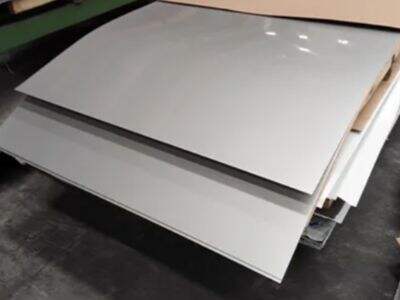Once upon a time, stainless steel was simply a specialty metal that most people encountered mainly in kitchens and hospitals. It became known for strength and resistance to damage. But these days, stainless steel is such a common material used in so many different locations. It is present in buildings, cars, airplanes and even in things like jewelry. That versatility makes it an essential material in our daily lives.”
Why Price Changes Matter
So if you purchase stainless steel for your company, job, project, etc., it’s massively critical that you understand why the value of stainless steel fluctuations. Being aware of these price changes can help you more effectively when purchasing. In this article, we are going to discuss about these main factors that cause fluctuations in the price of stainless steel. We’ll also include some handy tips to help buyers better monitor their purchases and help them get the most for their money.
What is Stainless Steel?
Stainless steel is a unique blend of metals. While it principally is made of iron and carbon, it also contains other key metals such as nickel and chromium. These elements combine to create a very strong and rust- and stain-resistant material. This property makes it ideal for use in rough environment where other metal can be damaged easily. In kitchens, for example, stainless steel can be used for sinks and countertops because it can withstand water without rusting.
Why Does the Price Change?
Many factors can affect the price of stainless steel. Here are some critical factors influencing its price:
Cost of Raw Materials: The cost of stainless steel is most affected by the price of raw materials such as iron ore, nickel, and chromium. The price of stainless steel rises, too, if the costs of these materials rise. That's because when raw materials are expensive, it costs more to manufacture stainless steel.
Supply and Demand: The available stainless steel and how much people are willing to buy can vary. That can be determined by a number of things, including the performance of the global economy, the amounts of stainless steel being produced and what products customers are interested in. Generally, when more buyers are eyeing up stainless steel than there is for sale, the price tends to increase. On the other hand, if there's an oversupply of stainless steel relative to demand, then it could go the other way.
Currency Fluctuations: Since stainless steel is a global product, its price can also be affected by fluctuations in the value of money across countries. This is true because when there is an increase or decrease in value of a currency, the price of stainless steel in that currency and vice versa would change too. This results in price volatility that buyers should go over with a good-toothed comb.
What Buyers Should Know
If you’re purchasing stainless steel, it can be helpful to understand what factors can influence its pricing. Knowing when prices are likely to increase or decrease can inform how much money you should be saving. Here are a few helpful caveats for buyers:
Tips for Buyers:
Monitor Trends — One must stay abreast of what is happening in the *market, prices of raw material and consumer demand. This can help you plan when prices may fluctuate. If you know what to look for then you can make better choices about the foods you purchase.
Build Good Relationships: You should establish good relationships with the suppliers. Having good relationships and networking with suppliers means they might give you a better price and make sure to deliver you the products at the time needed. Here's where a trusted supplier comes really handy and in our case can make a world of difference in terms of your buying experience.
Apply Smart Buying Strategies: You might want to utilize contracts as well as arrangements which can offer you some smart defense against abrupt adjustments in price. This could be futures contracts or other arrangements that let you enter prices in advance.

 EN
EN
 AR
AR
 NL
NL
 FI
FI
 FR
FR
 DE
DE
 EL
EL
 IT
IT
 JA
JA
 KO
KO
 PL
PL
 PT
PT
 RO
RO
 RU
RU
 ES
ES
 TL
TL
 ID
ID
 VI
VI
 TH
TH
 TR
TR
 UR
UR
 BN
BN
 LO
LO
 MY
MY

